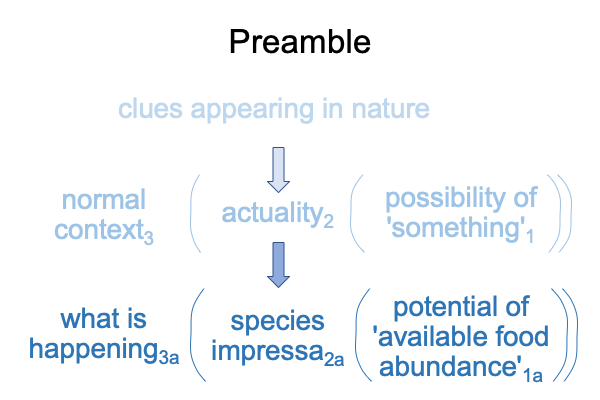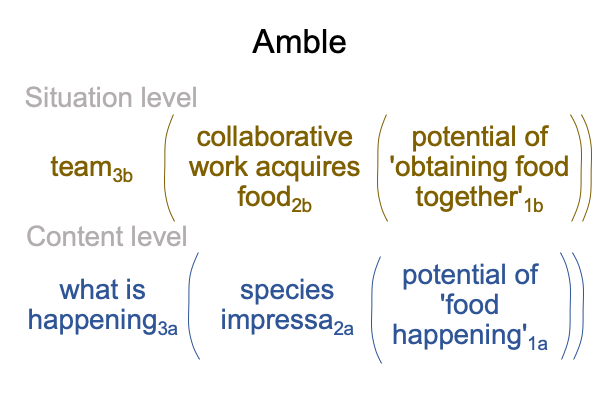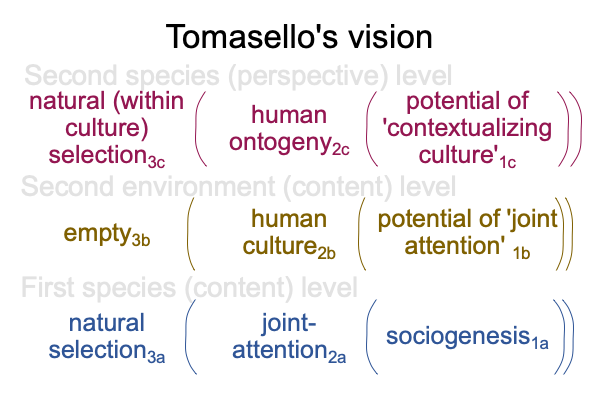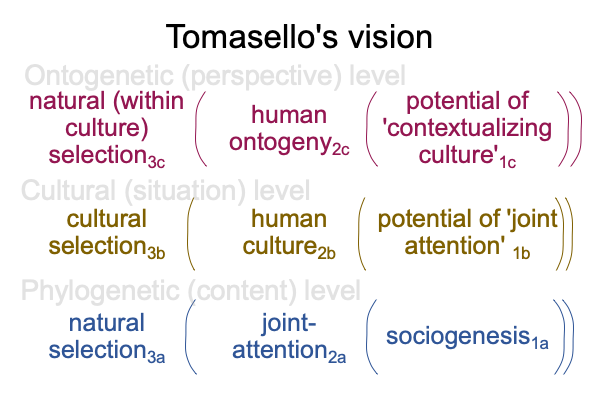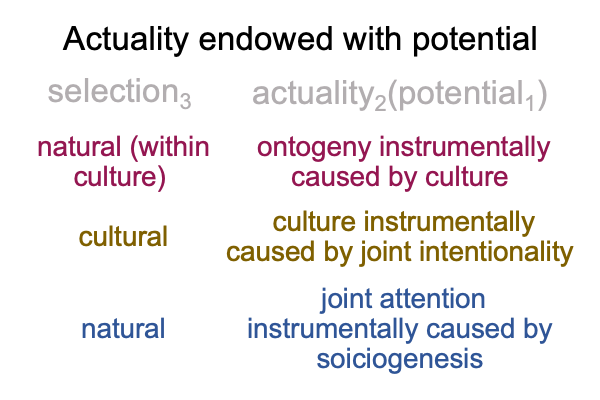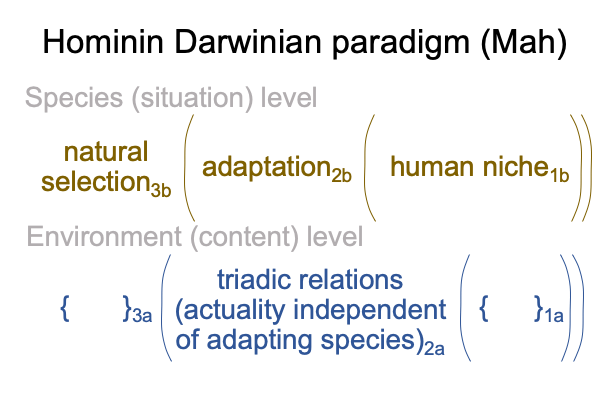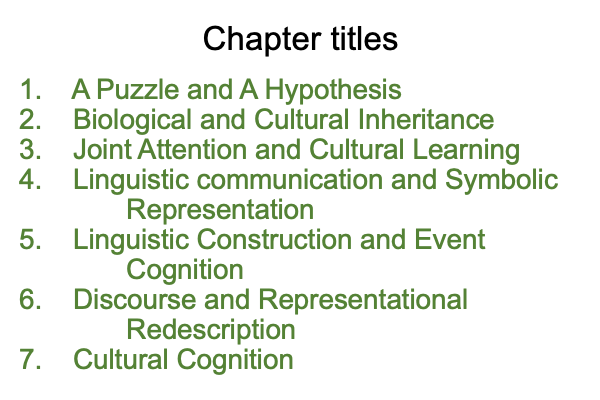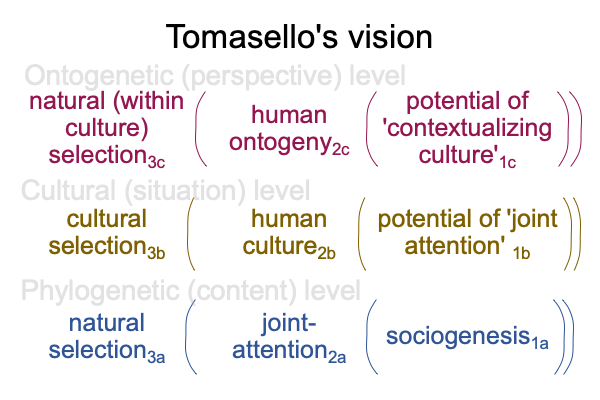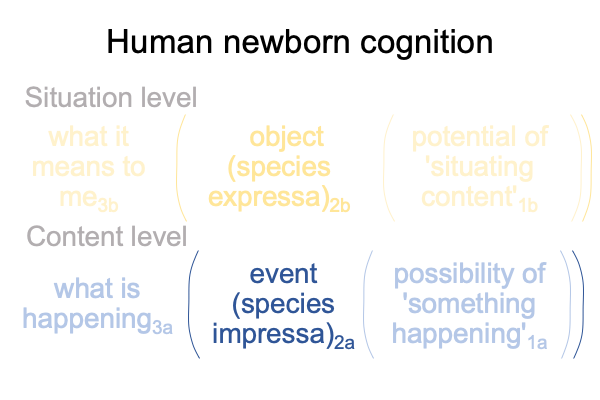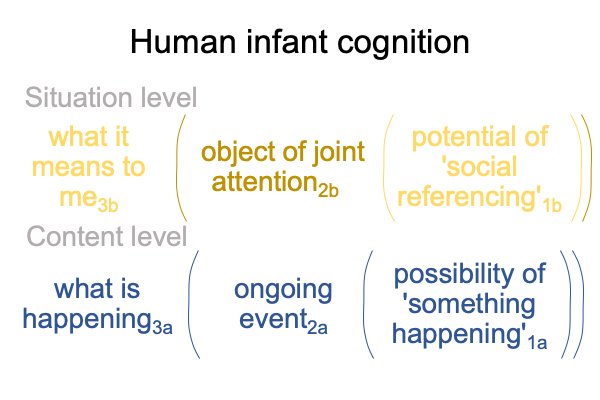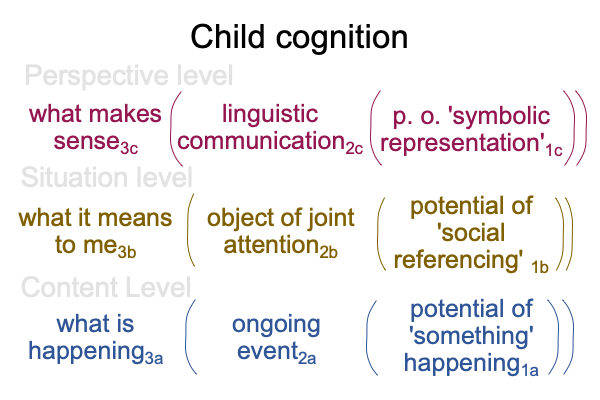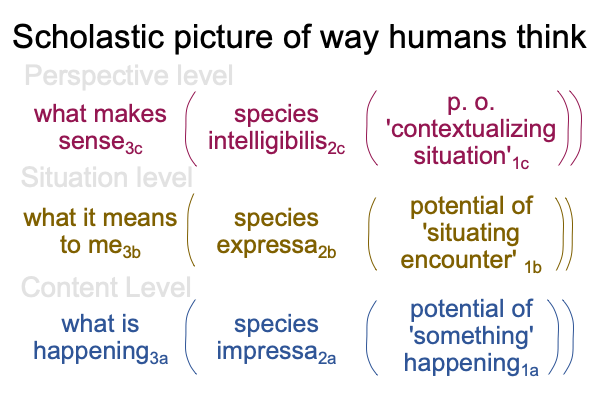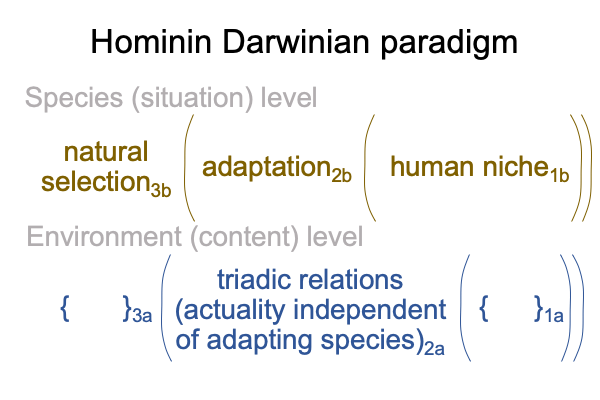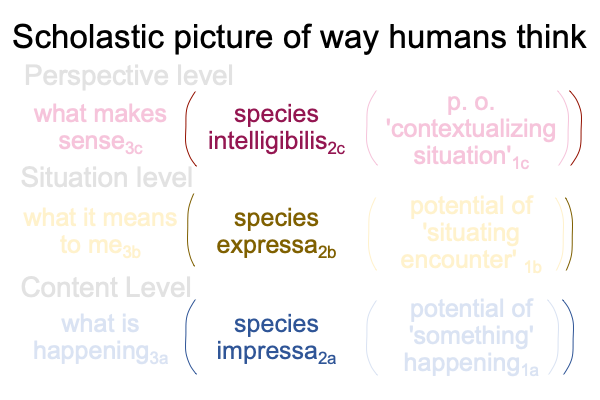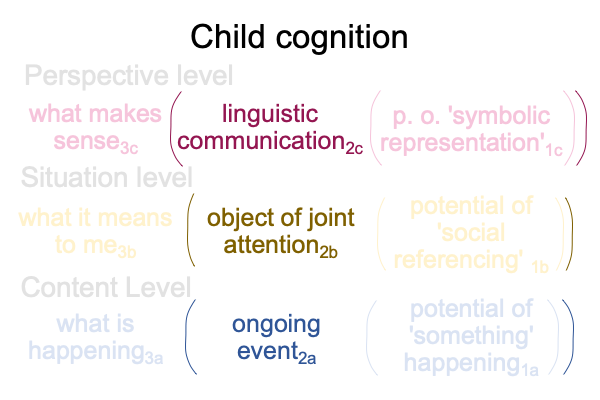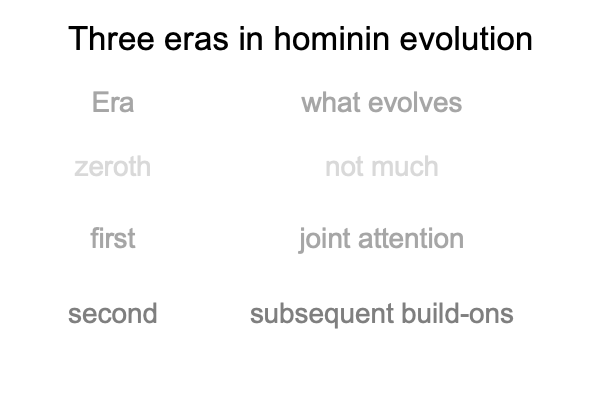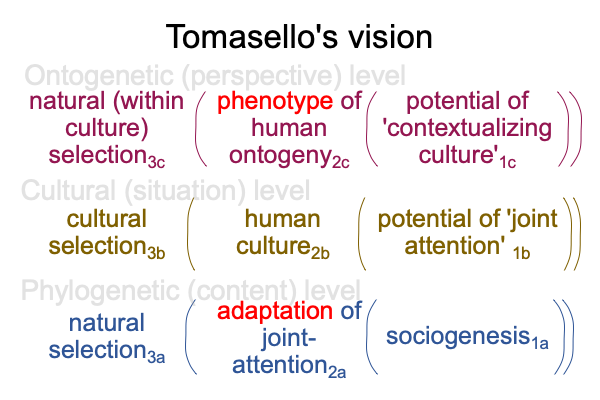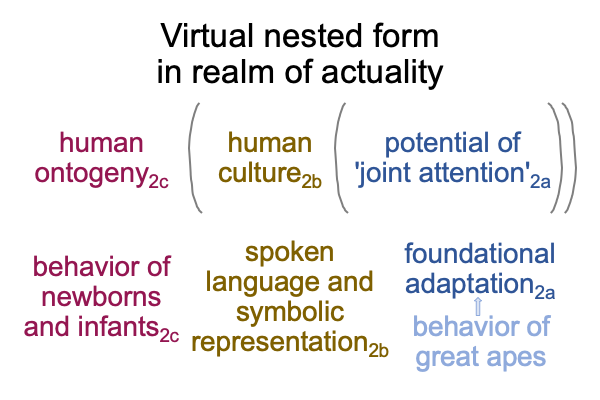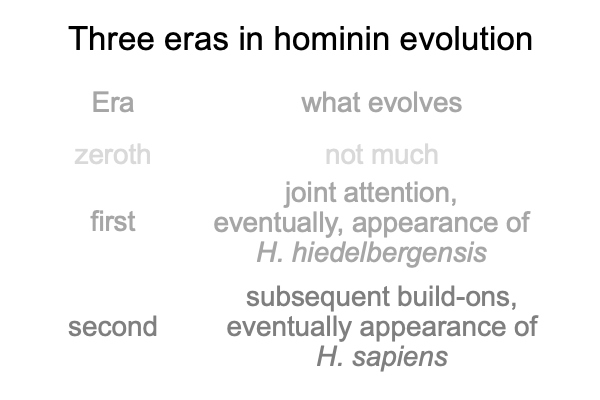Looking at Michael Tomasello’s Book (1999) “The Cultural Origins of Human Cognition” (Part 4 of 12)
0022 How does the realness of triadic relations2a potentiate the genesis of culture1b?
In chapter two, Tomasello discusses the biological and cultural inheritance of the last common ancestor between the chimpanzee and human.
Theoretically, the last common ancestor (LCA) is similar to the chimpanzee and the bonobo. The DNA begins to diverge around 7Myr. Australopithecus (so-called “southern apes”) are fully bipedal by, say, 3.5Myr. Bipedalism evolves in response to tropical forests giving way to mixed forest and savannah during the Pliocene.
In so far as the LCA has “culture”, the culture consists of youngsters learning content and situations through exposure, learning on their own and mimicking others. Examples include macaque potato washing, chimpanzee tool use, chimpanzee gesture signaling, and the ability of chimpanzees to learn human-designed symbols.
0023 Tomasello and colleagues argue (earlier, in 1993) that cumulative cultural evolution depends on imitation and innovation. Apes do both. Humans do both. So, there may only be a quantitative difference between the LCA and our own species. Or, that difference may be more than quantitative, since anatomically modern humans innately express tendencies to imitate and innovate.
0024 So what is being imitated and innovated in humans, that might be qualitatively different than in chimpanzees?
Could it have something to do with triadic relations?
In the following discussion. I rely on two short works by Razie Mah, A Primer on the Category-Based Nested Form and A Primer on Sensible and Social Construction (available at smashwords and other e-book venues).
0025 I start with imitation.
Why would a youngster chimpanzee imitate another’s actions?
The action of another chimpanzee is an actuality. To the extent that the youngster engages with that actuality, the youngster senses that the actuality2 has a normal context3 (say, foraging for food) and a potential1 (say, getting termites from a log).
0026 During the Latin Age, schoolmen propose that, for this extension, the normal context is ‘what is happening’3a and its corresponding potential is the possibility of ‘something’ happening1a.
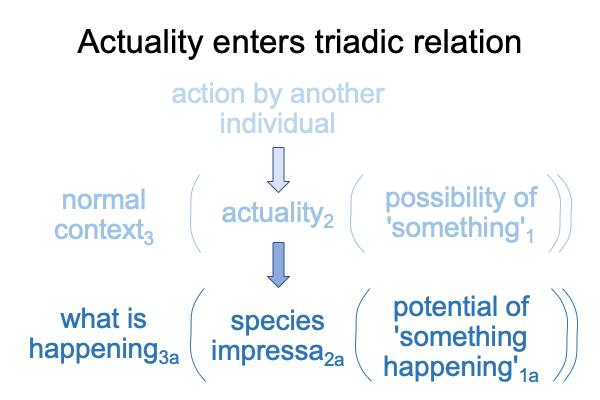
They call the actuality, “species impressa“, (say it like you are speaking Italian). “Species” means “a kind of”. “Impressa” means sensation, impression, qualia or feeling.
Can I say that the adult (fashioning a twig to fish for termites) and the youngster (who is watching and will soon imitate), are fashioning the same content-level nested form?
0027 The next step, according to the scholastics, is a category-based nested form that sensibly situates the content-level nested form. When humans are sensible, then a situation-level category-based nested form virtually emerges from (and situates) a content-level nested form. I call this interscope, “sensible construction”.
The youngster chimpanzee gets a perception (a species expressa2b) from its impressions (its species impressa2a) of what the other chimpanzee is doing2a. The older chimpanzee is fishing for termites using a twig.
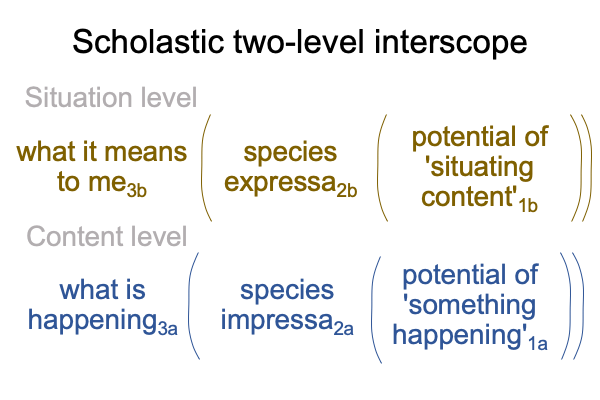
0028 Then, the youngster imitates.

